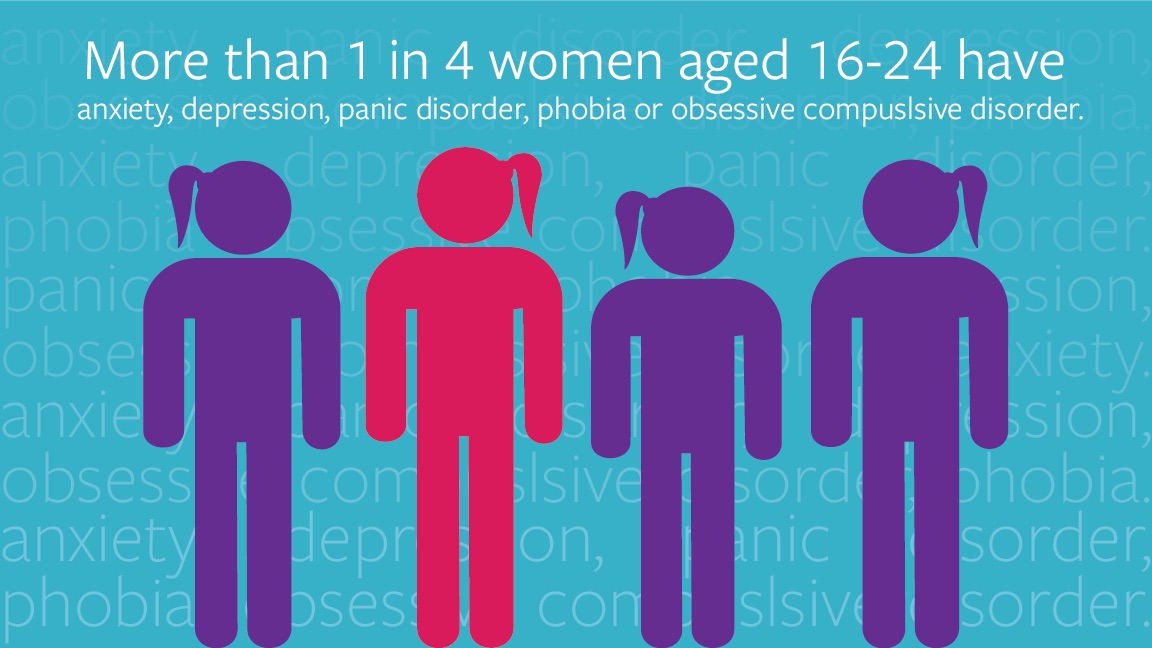This Women’s Day 2018, let us talk about a topic most often overlooked as ‘I am not crazy’: Mental Health.
According to a recent study, 23 percent of the female population has experienced a diagnosable mental health-related disorder. And those are just the known instances! These figures are growing exponentially by the day, many of them going unnoticed and untreated.
Which Mental Health issues do Women most likely suffer from?
While men experience higher rates of early onset schizophrenia, antisocial personality disorder, and alcoholism, some mental health conditions occur more often in women, which include:
- Depression: Women are twice as likely as men (12 percent of women compared to 6 percent of men) to get depression.
- Anxiety and specific phobias: Although men and women are affected equally by such mental health conditions as obsessive-compulsive disorder and social phobias, women are twice as likely as men to have panic disorder, generalized anxiety, and specific phobias.
- Post-traumatic stress syndrome (PTSD): Women are twice as likely to develop PTSD following a traumatic event.
- Suicide attempts: Men die from suicide at four times the rate that women do, but women attempt suicide two or three times more often than men.
- Eating disorders: Women account for at least 85 percent of all anorexia and bulimia cases and 65 percent of binge-eating disorder cases.
What Mental Health Symptoms do Women portray?
Even when men and women share a common mental health diagnosis, the symptoms, and subsequently the treatment, can be drastically different.
For example, a man who is suffering from depression is likely to report job-related problems, while a woman is more likely to report physical issues, like fatigue, appetite or sleep disturbances. Women are more likely to use religious and emotional outlets to offset the symptoms of depression compared to men, who often find relief through sports and other hobbies.
So why the gender differences when it comes to mental health?
What goes on in the brain and body of men and women to differentiate these responses to mental illness?
- Biological influences. Female hormonal fluctuations are known to play a role in mood and depression. For example, the hormone Estrogen can have positive effects on the brain, protecting women suffering from schizophrenia by maintaining the structure of neurons in the brain, which protects against some aspects of Alzheimer’s. On the less positive side, women tend to produce less of the mood stabilizer Serotonin and synthesize it more slowly than men, which may account for the higher rates of depression.
- Socio-cultural influences. Despite strides in gender equality, women still face challenges when it comes to socio-economic power, status, position, and dependence, which can contribute to depression and other disorders. Women are still the primary caregivers for children which adds stress to a woman’s life.
- Behavioral influences. There is some thinking that women are more apt to report mental health disturbances than men and that doctors are more prone to diagnose a woman with depression and to treat the condition with mood-altering drugs. Women are more likely to report mental health concerns to a general practitioner, while men report tend to discuss them with a mental health specialist. However, women are sometimes afraid to report physical violence and abuse.
As more research is carried out in this area to get a greater understanding of women’s mental health issues, experts are hopeful that targeted treatments will bring better results and more positive outcomes for women with mental health conditions.
Wishing all the women around the world a very Happy Women’s Day 2018!

